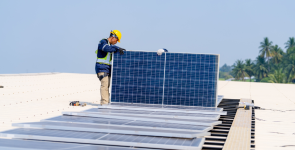The Maldivian rufiyaa has recently gained ground against the US dollar, prompting Economic Minister Mohamed Saeed to call for the release of “hidden dollars” into the market. But is this depreciation a genuine shift or a temporary lull? The complexities of the situation warrant closer examination.
Conflicting Interpretations
The black market exchange rate, a key economic indicator in the Maldives, saw the dollar peak at around MVR 18-19 prior to Ramadan. This surge is attributed to increased import demand and a rise in pilgrimages. However, the dollar’s appreciation was less dramatic than anticipated, likely due to strong tourism figures.
Market observers contend that despite seasonal fluctuations, the dollar remains more expensive during this Ramadan compared to earlier years. In contrast, former President Abdulla Yameen posits that the depreciation is not a result of government intervention, but rather a consequence of stalled infrastructure projects and decreased demand for dollars.
Factors Behind the Dollar’s Decline
Several factors likely contribute to the dollar’s recent weakening. A robust tourism season, particularly in late 2023 and early 2024, has bolstered dollar inflow. However, a significant portion of this foreign currency appears to bypass official banking channels, feeding the black market instead. Examples include service charges earned in tourism and companies opting to pay employee salaries in dollars. Notably, Maldives Airports Company Limited (MACL) now pays 50% of employee salaries in dollars.
Former President Mohamed Nasheed suggests the dollar’s decline is linked to the government’s decision to halt money printing, a practice heavily employed during the previous MDP administration. This change, often lauded by international financial institutions, may be having a stabilizing effect.
Is the Depreciation Sustainable?
While the black market dollar rate has eased, questions linger about the sustainability of this trend. Some analysts predict that the off-season could see the dollar regain strength, potentially surpassing MVR 20. This view aligns with the behaviour of those hoarding dollars, which may be anticipating a more favourable exchange rate in the future.
The government has implemented measures aimed at further depreciating the dollar and curtailing black market activities. Raising the ceiling on dollar-denominated accounts is one such initiative. Nevertheless, experts caution that without a concerted crackdown on the black market, these measures may prove insufficient.
Outlook: Uncertain and Complex
The Maldivian dollar exchange rate presents a complex and dynamic picture. While the recent depreciation offers some respite, its longevity remains uncertain. The interplay between tourism revenue, black market dynamics, and government policies will continue to shape the dollar’s fate in this island nation. Further monitoring and analysis are necessary to gauge the true trajectory of this key economic indicator.



















